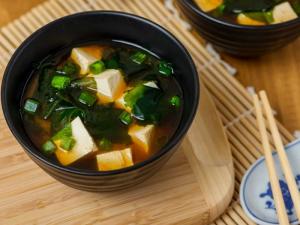Miso Market to Reach USD 121.9 Billion by 2035 on Surge in Probiotic-Rich, Clean-Label Fermented Foods
Rising demand for probiotic-rich, umami-packed condiments is driving steady growth in the global miso market.
NEWARK, DE, UNITED STATES, August 12, 2025 /EINPresswire.com/ -- A new competitive analysis of the global miso market reveals a robust expansion trajectory, driven by a worldwide shift toward health-conscious eating and an appreciation for fermented ingredients. The market, valued at a substantial USD 77.0 billion in 2025, is forecasted to grow at a Compound Annual Growth Rate (CAGR) of 4.7% to reach an impressive USD 121.9 billion by 2035.
This significant growth is fueled by a confluence of trends, including the rising global demand for probiotic-rich foods, clean-label condiments, and umami-packed flavor profiles.
The analysis highlights that while miso holds a specialized niche within its parent markets, its influence is expanding. It commands a 4-6% share of the fermented food market, a 3-5% share of the condiments and sauces market, and a 2-3% share of the health and wellness food market, with a notable 5-7% representation in the organic food segment. Its role as a key ingredient in plant-based diets is also growing, capturing approximately 4-6% of that market. This specialized, yet growing, presence underscores miso’s increasing relevance in diverse food industries.
Competitive Landscape and Market Dynamics
The miso market is highly concentrated, with a few Japanese powerhouses dominating the landscape. Marukome Co., Ltd., a leader in the industry, holds a commanding 13% market share. Its long history, commitment to quality, and international expansion, including a U.S. factory, solidify its top position. Other key players like Hikari Miso Co., Ltd., Yamato Soysauce & Miso Co., Saikyo Miso Co., Ltd., and Hanamaruki Foods Inc. are also pivotal to the market’s dynamics. These companies are not resting on tradition; they are actively innovating. For example, Hikari Miso is launching artisanal, limited-edition products and new flavor collaborations, while Hanamaruki is leveraging advanced technology to create innovative formats like liquid koji and new products for the international market. This blend of tradition and innovation is a key competitive driver.
The analysis identifies several top investment segments for 2025 that are shaping the market. Red miso, known for its deep umami and rich flavor, is the dominant product type, accounting for a significant 48.7% market share. Soybeans remain the primary raw material, securing a 53.2% share, driven by their high protein content and the burgeoning demand for plant-based proteins. The consumer end-user segment is the largest, holding a 60% share, as households worldwide increasingly adopt miso for its versatility and health benefits. Retail is the leading distribution channel, also with a 60% share, providing broad access to a wide range of miso products.
Regional Growth and Outlook
Growth is not uniform across the globe. While Japan remains a mature market, it is still growing at a healthy 4.8% CAGR, with a focus on product diversification, reduced-sodium options, and convenience-focused packaging for single households. More exciting growth is emerging from the Asia Pacific region, particularly from India and China. India leads all countries with a projected CAGR of 5.8%, followed by China at 5.3%. This rapid expansion is attributed to a growing middle class, rising demand for plant-based and protein-rich foods, and increased experimentation with East Asian cuisines.
In developed markets like the United States and Germany, growth is steadier at 3.9% and 4.1% CAGR, respectively. Here, the focus is on integrating miso into new formats like dips, dressings, and ready-to-drink beverages. Competitive strategies in these regions involve localizing products with country-specific labeling, promoting its use in fusion cuisine, and highlighting its role in gut health and wellness.
However, a key challenge remains: limited consumer awareness in non-Asian countries, which requires ongoing education about miso’s versatility and nutritional value. Manufacturers who can effectively overcome this hurdle through targeted marketing and product innovation are poised for success.
The miso market is a testament to the power of a traditional food evolving to meet modern demands. As manufacturers navigate regional regulations and fermentation challenges, their investments in clean-label products, non-GMO sourcing, and functional wellness claims will be the key to outperforming competitors and securing a larger piece of this rapidly expanding global market.
Request Miso Market Draft Report - https://www.futuremarketinsights.com/reports/sample/rep-gb-3160
For more on their methodology and market coverage, visit https://www.futuremarketinsights.com/about-us.
Explore Related Insights
Miso Paste Market: https://www.futuremarketinsights.com/reports/miso-paste-market
Demand of Kozani Saffron in Greece: https://www.futuremarketinsights.com/reports/demand-of-kozani-saffron-in-greece
Dips and Spreads Market: https://www.futuremarketinsights.com/reports/dips-and-spreads-market
Rahul Singh
Future Market Insights Inc.
+1 347-918-3531
email us here
Legal Disclaimer:
EIN Presswire provides this news content "as is" without warranty of any kind. We do not accept any responsibility or liability for the accuracy, content, images, videos, licenses, completeness, legality, or reliability of the information contained in this article. If you have any complaints or copyright issues related to this article, kindly contact the author above.

